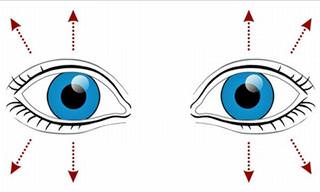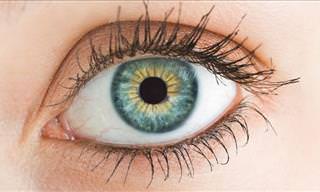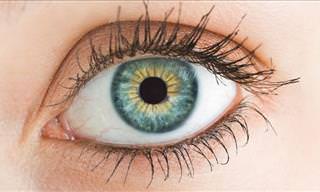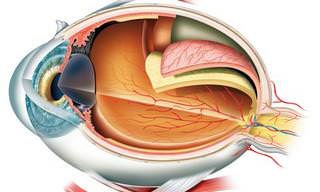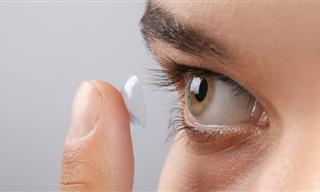Our vision is one of the most important things our brain does. In fact, some studies show that perhaps the biggest operation of the brain is the one involving seeing. Vision is so interesting because not only do our eyes do an amazing feat of absorbing light and encoding information into our brains, but our brains themselves play with that information a lot in order to give us the logical visual world we see around us. Up stays up, down stays down, colors stay the same (unless you're really drunk). In this collection, you have the opportunity to learn all about eyes and vision. It's a fascinating read, as well as some insightful videos.
1. These optical facts will make your eyes pop out
2. Ever Wondered What Your Eye Color Means?
3. How Eye Glasses Make Us See Better
4. 23 Extraordinary Vision Facts That'll Open Your Eyes
5. Watch: What Causes Floaters in Your Eyes?
6. 12 Tips People with Glasses Need to Know
7. How Color-Blind People See the World
8. Here's Why Your Eyebrows Exist
9. How Our Eyes Make Sense of Our Surroundings
10. 6 Great Tips for Removing Scratches from Eyeglasses
11. Fascinating! Learn How 20 Different Animals See the World
12. These Photos Show What Life Looks Like to the Color Blind
13. HD vs 4K vs 8K: What's the Difference?
14. The Psychology of Color - Informative!
15. What Resolution Does the Human Eye Have?
16. How Animals See the World - Fascinating!
Click on each of the titles in blue below to see the post that interests you!

The human eye is one of the most complex organs we have in our body and enables the most important sense in our nature: vision. It provides food for our memory, a sharp definition of the world around us, and astounding capabilities that are beyond unbelievable. If you're curious to know more about the human eye (and you certainly should be), here are 17 facts that will boggle your mind.
Have you ever looked at the mirror and wondered why your eyes look the way that they do? I used to wonder that too, but then I came across this fantastic infographic that explains in detail what causes eye colors to differ, and what it actually means.
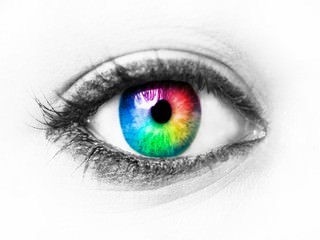
If it weren't for my lenses and glasses I wouldn't be able to truly appreciate the wondrous sights of the world that make my life so precious, my children, grandkids, pets, nature, sunsets ... And with this clear video I can finally see, as if for the first time, distinctly, just how glasses enable my vision to be so fully improved. Optometry really is amazing!
When I read these scientific facts, I wasn't prepared for how stunning they would be. It's incredible the amount of wonderful things in life that we take for granted. For instance, the eye is an amazing body part, but did you know how amazing it really is? These 23 facts will open your eyes to its extraordinary truth.
I always thought there was a strange phenomenon linked to the floaty objects I see in my eyes, but I never knew though that it was taken so seriously in science. The following video provides an incredibly detailed illustrated explanation to describe what actually happens while you experience those weird shapes flying in your sight. Pretty impressive, huh?

From scratches and scuffs to broken hinges, as well as the countless times we misplace our glasses, such occurrences leave us in dire need of a little assistance in the vision department. These 12 useful hacks will help you get by without your spectacles and will help you get a longer life out of them too.
The ability to distinguish between colors is crucial when navigating through everyday life. For example, color blind people might have trouble judging traffic lights or determining if food has gone bad. This interesting video illustrates how people who are color-blind see the world.
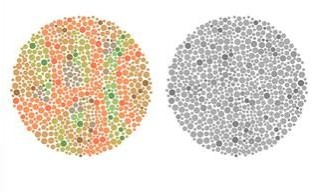
If you compare modern human beings to our prehistoric ancestors, one of the most obvious physical differences you'll find is the lack of a massive brow ridge. Over time, human evolution led to us developing finer facial features, smoother foreheads, and eyebrows. But why did this happen? Read on to find out!
The human eye is one of our most complex and mysterious organs, and while much is known about it, a lot more is yet to be discovered. So how far does our collective knowledge of the human eye extend for? Watch this informative video and find out for yourself.
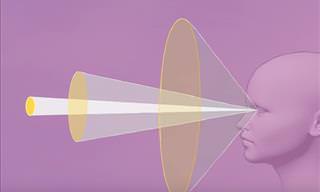
According to the Vision Council of America, approximately 64% of adults wear eyeglasses. Anyone who’s ever had to wear glasses knows how annoying it is when they get scratched. True, the best treatment is to contact the optometrist and the eyeglass store nearest you to fix it, but until you do so you can treat these scratches yourself. Learn the 6 ways to fix scratches on your eyewear so that you can continue to function comfortably until you have time to take them in for a professional repair.

It’s unbelievable how some animals have thousands of eyes, others can see ultraviolet or have panoramic vision! The video you're about to see contains the most noteworthy facts about the vision of 20 different, yet equally amazing, animals, among which are both our favorite pets and exotic species. A fun twist is that the video also shows you how they see the world compared to humans.
Despite its name, color blindness doesn't mean that a person sees the world in black and white. In fact, only 0.00003% of the world's population cannot see color. Therefore, the term "color vision deficiency" (CVD) is a more accurate one. According to the above website, around 0.5% of women (1 in every 200) and 8% of men (1 in every 12) suffer from some form of CVD. There are different variations of vision deficiency, such as Protanopia (which makes everything seem greener), Deuteranomalia (which makes everything look a little faded), Tritanopia (greenish-pink tones), and Monochromacy (total color blindness).
1080p, 2K, 4K, 8K, true HD, real HD - there are so many different kinds of resolutions these days for televisions! Aren't you confused already? Is 4K really that great? Can you really see a difference? Is the 8K twice as good? Well, it's time to finally learn the true difference between these resolutions, so you finally know what all these terms mean, and what should actually matter to YOU.
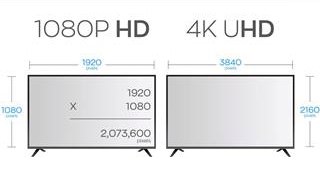
What colors should you use to paint your house and office? Well, that depends on what you want to achieve! Colors have a strong impact on how we feel throughout the day, and therefore, knowing the psychology behind when painting can be very beneficial!
We usually know the resolution of the screens we have, or at least can safely check. 4K TVs, now the new standard of HD, have a resolution of 3840 x 2160 pixels. But if we can see this, surely the resolution of our OWN vision must be higher? How high can it go? This video is going to answer just that.
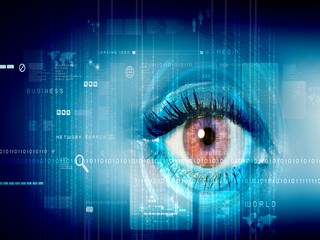
Humans are very visual creatures. We navigate using our sight, get attracted by sight, think of the world through our eyes and love colors. But what about other animals? Do they live their lives according to colors and images? Not always. Some see in more dull colors or fewer colors. Some only see in dark tones and some don't use their eyes at all! So if you ever wondered how animals actually see the world, this one is for you!
 Go to BabaMail
Go to BabaMail











